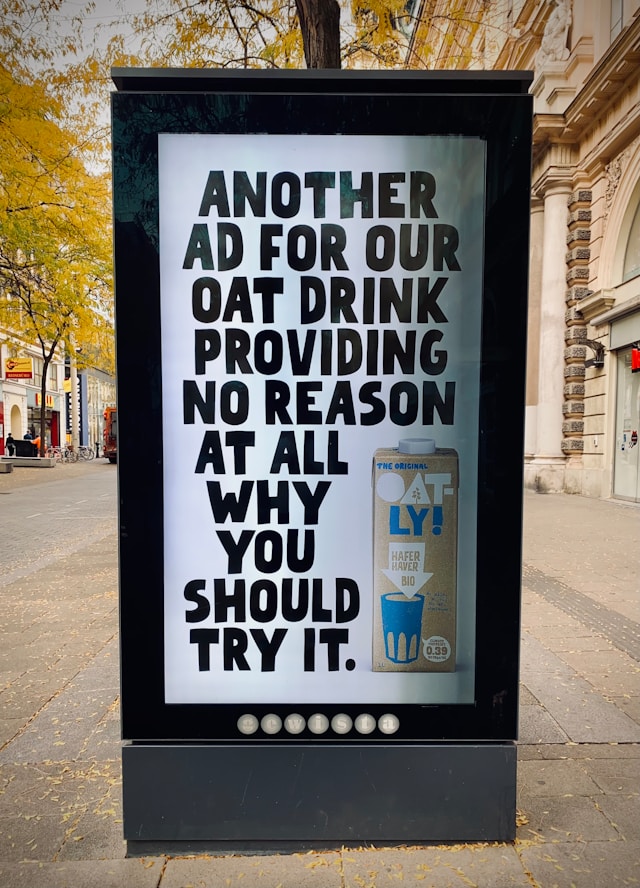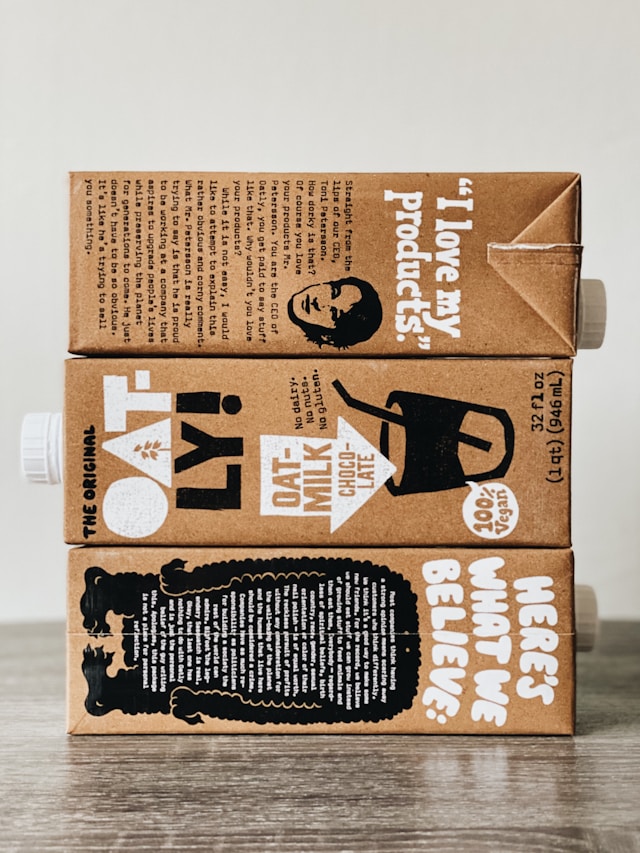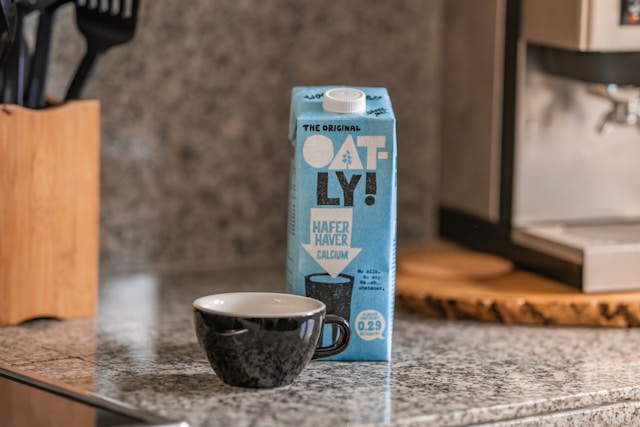A Print Advertisement Case Study: Let’s Spill The Oats
If you’ve read my post on the importance of traditional advertising, you’ll now know a little bit more about why we should never underestimate this marketing form. With this in mind, let’s take a look at one of my favourite examples of advertising out there in practice.
Oatly: one of the nation’s favourite plant-based milk alternatives, which continues to position itself for a larger share of the market. Targeting the environmentally conscious younger demographic, Oatly has managed to surge in popularity – but not just for its eco-friendly front and great-tasting product.
Marketers doing anti-marketing in print advertising
Oatly’s marketing team take everything that you think good marketing is theoretically – and completely rip it to shreds. They ignore the original rules on selling (you should highlight product benefits in a concise message, right?) and take on an opposite approach to marketing: an unapologetic, unconventional, and hard-core honest approach to messaging, which makes it seem like the marketers on board truly hate, well, marketing.
The distinct voice of Oatly print advertising
- Bold
But, in some ways, it makes sense, right? They’re creating the opposite of milk, so why shouldn’t they support the opposite of marketing? This Swedish-based oat milk brand has disrupted the industry and forced itself to stand out from the crowd with its boldness and honesty. And there’s no surprise that these characteristics have helped it ultimately increase consumer retention. Not only this, but it may also be shaping how we see milk alternative brands – cool.
- Controversial
Oatly champions itself as a brand which brings controversy to light, challenging societal norms and mocking the traditional dairy industry. In some ways, it also mocks marketing itself. For example, its famous billboard, which reads, “You actually read this? Total success.”, makes fun of advertisers tirelessly trying to grab the attention of their audiences and encourages readers to question its meaning.
- High-risk humour?
If you’ve already read my post on humour in advertising, you’ll know that advertising high-risk products with a joke can sometimes backfire. While Oatly’s milk alternative products aren’t exactly ‘high-risk’, the meaning behind them is. This brand never wavers in its dedication to the environment, suggesting the cause behind the face of the brand is significantly serious.
However, known for mocking advertising within its own advertising, the thing I love most about Oatly is that it perfects its humour without belittling its serious message. By openly acknowledging challenges whilst being transparent about its oat milk creation process, this brand is able to humanise itself and get consumers on board with something that’s so unapologetic.

The results of this print advertising case study?
Oatly’s team of hate-filled marketers have only gone and done it – the company enjoys revenues increasing by 4.9% for the fourth quarter ending December 2022.
What can print advertisers learn from Oatly’s example?
Just because something takes on a traditional form doesn’t mean that it has to be old and boring. Oatly has shown consumers and brands alike that it is very possible to connect with consumers on a personal level by striking a balance between a serious message and witty creativity – all wrapped up in the form of a traditional print medium. You don’t always need to sell something on a screen, and you shouldn’t see it as a weakness for doing so.

In need of some print advertising? Vic’s got you covered
Our online and offline worlds are more saturated with advertising messages than it has ever been before. If you want to stand out with a striking design or a witty line of copy, get in touch with me and let me work my creative magic today! I’m here to help you build lasting relationships with your target audience and make that lasting impression that Oatly has so cleverly crafted.


Your article helped me a lot, is there any more related content? Thanks!